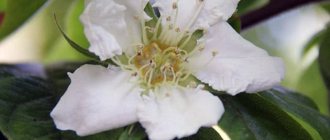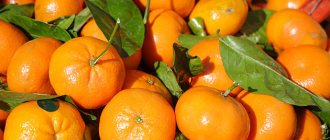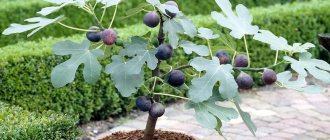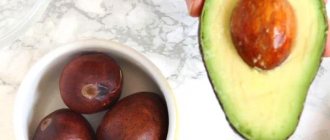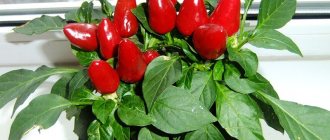Author: Elena N. https://floristics.info/ru/index.php?option=com_contact&view=contact&id=19 Category: Houseplants Published: June 23, 2018Last edits: January 11, 2021
- Watering
- Diseases and their treatment
- Beneficial features
Lychee (lat. Litchi chinensis), or Chinese lychee , is a plant of the Sapindaceae family, which is also called liji, fox, laysi or Chinese plum. There is documentary evidence that this fruit tree was cultivated in China already in the 2nd century BC, and currently it is grown in all countries of Southeast Asia. Juan Gonzalez de Mendoza wrote that the lychee fruit resembles a plum, which does not burden the stomach, and can be eaten in any quantity, which is why he called this crop the Chinese plum. 0Litchi was brought to Europe by the French botanist Pierre Sonner from his trip to Southeast Asia and China. This was in the 18th century. How do they eat lychees? These fruits are good in fresh or canned form; they are used to make ice cream, jelly and other desserts, and also make traditional Chinese wine. We will tell you how you can grow lychee from seed at home, as well as what are the benefits or harms of lychee.
Planting and caring for lychee
- Lighting: Daylight hours are approximately 12 hours. You need bright diffused light from western or eastern window sills.
- Temperature: all year round not lower than 20˚C.
- Watering: regular, moderate, it is best to water through a tray.
- Feeding: from the second year of life - 1-2 times a month with a solution of complex mineral fertilizer in half the dosage or weak solutions of organic fertilizers.
- Pruning: as needed at the beginning of the growing season.
- Reproduction: at home only by seeds (seeds).
- Pests: aphids, spider mites, thrips, whiteflies, scale insects or mealybugs.
- Diseases: root rot.
- Properties: the fruits of the plant are considered medicinal and are widely used in traditional Chinese medicine.
Read more about growing lychee below.
Description and characteristics of cultivation
Lychee is an exotic tree. However, there is no consensus whether its fruits are berries or fruits. But it is known for sure that the fruits of the plant have a wonderful rich taste and are very healthy. In its natural environment, this plant is a tall (up to 30 m) tree with a spreading crown.
Such trees can be found in Southern China, as well as in India and Africa. In hot climates it bears fruit abundantly, but if the climate is humid, lychee may bloom, but not produce a harvest. In this case, extreme heat or a sharp drop in temperature are detrimental to the tree. At home, lychee is unlikely to grow to at least a few meters in height, so it can easily be grown even on a windowsill. The indoor flower has a spreading crown, its leaves are dark green and glossy. During the flowering period, you can notice rather unusual flowers that are completely devoid of petals and have a yellowish tint. From one inflorescence you can subsequently get about a dozen tasty fruits.
Lychee berries are small oval fruits. The peel is quite hard to the touch, lumpy, and colored red. The pulp has a yellowish tint and vaguely resembles jelly. Inside you can find a large bone. It is because of this that in ancient times this fruit was nicknamed “dragon’s eye.” Tastes more like grapes. In order to grow this exotic flower on your own windowsill, you must comply with the necessary conditions: optimal temperature, watering regime and soil composition.
Botanical description
Lychee is an evergreen tree with a spreading crown, in natural conditions reaching a height of 10 to 30 m. Its leaves are complex, pinnate, consisting of 4-8 lanceolate or elongated ovate leaves with a sharp tip. The surface of the leaves is glossy, dark green, and the underside is grayish. The flowers, collected in lush umbrellas up to 70 cm long, have no petals and consist of a greenish or yellowish calyx. Usually, from the numerous flowers of the inflorescence, no more than 15 ovaries develop into fruits, and the rest fall off. Lychee fruits are from 2.5 to 4 cm long and are covered in a red peel covered with numerous sharp tubercles. Inside the fruit there is a light, jelly-like sweet pulp that easily comes away from the peel and has a barely noticeable wine flavor. In the middle of the fruit there is an oval dark brown seed. In the tropics, lychee fruits ripen in May or June.
What does the plant look like?
Lychee is a fairly tall tree, sometimes reaching a height of up to 30 meters. On the green crown, like toys on a Christmas tree, hang strange fruits: red “cones.” In fact, these are not cones at all, but small fruits in a dense red peel, under which the juicy pulp is hidden.
Lychee prefers to grow near bodies of water, on the sea coast, under the tropical sun. Here he is warm and humid, and there are no harsh winds. Japan, China, the Philippines, Cuba, and Hawaii can boast that lychee gardens grow on their territories.
Growing lychee from seed
Growing conditions
In our latitudes, lychee is a strange plant, so it is difficult to purchase its seedlings in the garden pavilion. But you can try to grow a tree from a seed on your windowsill. To do this, you need to buy ripe (with a strong aroma, red skin and juicy translucent pulp) lychee fruits, separate the pit from the pulp, wrap the seed in a damp cloth or gauze and keep it there for a week, keeping the wrapper moist.
In the photo: Lychee tree branch with berries
The swollen seed is freed from the tissue and planted in a pot with drainage holes, on the bottom of which a layer of expanded clay is first laid, and then flower soil. The seeding depth is 2 cm. Planting several seeds will increase your chances of success. After planting, water the soil in the pot with cool water. The seed is germinated at a temperature of 25-30 ºC, and the soil should be slightly moist all the time. The appearance of sprouts can be expected in 1-4 weeks, but they may appear later.
- Chlorophytum - care, photos, types
Growing exotic pomegranate at home
As soon as the first reddish lychee leaves unfold, the pot is placed on a well-lit windowsill, covering the plant from direct sunlight, and at the stage of development of 4-5 true leaves, the seedlings are transplanted into a large container. Keep in mind that lychee requires twelve hours of daylight for normal development. As for the air temperature in the room, even in winter it should be at least 20 ºC.
How to properly prepare seeds for planting
In order for a lychee seed, a fruit bought in a regular store, to germinate, you should follow these steps:
- When purchasing a fruit, you need to pay attention to its ripeness;
- Remove the seed from the fruit, carefully removing the pulp;
- Rinse;
- Place in a container with water and keep in this condition for a day;
- For better germination, treat with a growth stimulator;
- Place in coconut soil without burying;
- The container where the bone is located is covered with polyethylene or covered with a flask from a plastic bottle;
- Place in a warm place, the room temperature should be about 25 degrees.
The seed will germinate in about 10-14 days.
Gardeners also use another method of germination. The bones, soaked in water, are wrapped in a damp cloth and kept for about a week. The fabric should not dry out. In a week the seeds will sprout. These seeds can be placed in the ground and a tropical tree can be grown.
Lychee: what is it and how to eat it
Lychee care at home
Watering
Lychee is a moisture-loving tropical plant, so the seedlings are sprayed with boiled or filtered water from a spray bottle twice a day. Watering the substrate should be regular but moderate. To moisten the substrate, water at room temperature that has been passed through a filter or left to stand for two days is also used. The most convenient way to moisten the soil in a pot is to add water to the pan. Develop a watering regime so that the plant does not suffer from either a lack or excess of moisture in the roots, and maintain high air humidity in the room all the time.
Top dressing
The first time the substrate in a pot with lychee is fertilized three months after germination, and then fertilizing is not applied until the plant is at least a year old. From the second year of life, lychees are fed 1-2 times a month with a solution of complex mineral fertilizers in moderate concentration. The plant also responds well to organic fertilizing in the form of mullein solution (1:15). Fertilizers added to the substrate promote the formation of buds and stimulate the plant to bear fruit.
How to grow edible tangerine at home
Trimming
Lychee grows slowly, so it does not need frequent pruning. You will only need to form the crown of the tree in the first two years of its life, and after that maintain its shape by shortening too long shoots. Even if the tree does not bear fruit, do not be upset: after all, not every amateur gardener has such an attractive exotic plant in his home.
What is known about lychee
This interesting plant has quite a few names. Lychee is also called Chinese plum or Chinese cherry. In nature, lychee can reach 30 meters in height. Naturally, growing at home does not allow the plant to develop to such a size: in most cases its height is a maximum of 2.5 m. But usually lychee does not grow to such a size on a windowsill. Therefore, it will not require much space if the owners want to grow the tree themselves.
Lychees bear small fruits, the diameter of which rarely exceeds 4 cm. The shape of lychee berries is oval, while they themselves are covered with a tuberous peel. In many ways, the taste of such fruits is similar to that characteristic of grapes. Actually, this fact is also reflected in the alternative name of this plant. There are many interesting beliefs and myths associated with lychee. Therefore, all lovers of Chinese culture have now become interested in plants. But how exactly to grow it at home? Now we need to figure this out.
Pests and diseases
Diseases and their treatment
Lychee at home is rarely affected by disease. Troubles with the plant can arise as a result of insufficient or improper care. For example, due to excessive watering, the roots of the plant can rot, and if there is insufficient moisture, the lychee will begin to wither and wither. Follow our recommendations, and your tree will never get sick.
In the photo: Lychee branch with berries
Pests and their control
Lychee is also resistant to pests, but if aphids, spider mites, thrips, whiteflies, scale insects or mealybugs appear on some indoor plants, they can move onto lychees. Therefore, regularly inspect your plant collection and at the first symptoms of infection by a particular pest, take action immediately: treat the occupied plant with a solution of an insecticidal or acaricidal preparation prepared in accordance with the instructions.
- How to sow snapdragon seedlings, how to care for seedlings
Contraindications for the use of lychee
Important! The fruit has almost no contraindications, but like any plant it has some effects on the body that have unpleasant consequences, especially due to overeating.
- Allergic reactions.
- Gout.
- With large consumption, the mucous membrane of the oral cavity becomes inflamed.
- Excess weight appears when you overeat sweet varieties of fruit.
- You can't eat the seeds, they are poisonous.
- Fruits with brown skin are not eaten so as not to cause stomach upset.
- Eating too much fruit causes gas formation.
Interesting! Lychee was considered the fruit of noble people. If ordinary peasants ate the fruit, they were severely punished.
During the harvest period, Thailand hosts the lychee festival, which consists of a festive procession, food and souvenir fair for fruit products. Various competitions are held, one of which is the selection of “Miss Lychee”.
Types and varieties
Breeders have developed many varieties and hybrids of lychee, but this crop is widely grown only in Asia. The most famous cultivars of the plant are:
- Green drooping is a tree with light green leaves, the fruit of which has a barely noticeable green stripe. The fruits do not lose their freshness and taste even three days after peeling them;
- Glutinous rice balls - the fruits of this variety have dense and sweet pulp with a taste of honey, they have a red skin without tubercles, and the seed is much smaller than that of fruits of other varieties, or there is none at all;
- Sweet osmanthus is a variety with sweet fruits that have the smell of osmanthus, in a bright red and very bumpy skin;
- Green Yatu - this variety has a fruit skin covered with dark green specks;
- Blackleaf is an early-ripening variety with fleshy fruits, the peel of which secretes a juice similar to red ink;
- May red is the earliest variety, the fruits of which are harvested in May;
- Concubine's Smile is the oldest early ripening variety. The fruits and peel of the plant secrete red juice.
In the photo: Lychee berries are a healthy fruit
Eating
Lychee fruits spoil very quickly, so they are cut and transported along with the bunch. The most nutrients and beneficial substances are found in fresh fruits. To reduce crop loss, they preserve, make jams and preserves, stew, fry, and dry.
Dried lychees are sold in other countries under the name "lychee nut" because the skin and pulp become hard when dried. Used in sauces, used as a ground seasoning.
Lychee is used to make mousses, cold soups, frozen, and used in the preparation of alcoholic and non-alcoholic drinks.
Properties of lychee - harm and benefit
Beneficial features
Lychee fruits contain substances beneficial to the human body: vitamins E, K, C, H, PP and group B (B1, B3, B6), magnesium, sodium, phosphorus, iodine, manganese, zinc, selenium, iron, calcium, potassium, pectins and organic acids.
Eastern medicine uses lychee fruits to normalize sugar levels in diabetes, treat and prevent atherosclerosis, improve kidney, liver and lung function. People with cardiovascular diseases are advised to consume lychee fruits because they contain potassium in their pulp. Lychee has also been proven to be beneficial for anemia, high blood cholesterol, pancreatic diseases and intestinal disorders. In Hindu medicine, lychee fruits are considered an aphrodisiac that increases sexual desire and male power.
Contraindications
Lychee fruits are contraindicated only for those who have an individual intolerance to them. They bring only benefits to everyone else, but stale fruits with dark skin can cause intestinal upset.
Positive aspects of lychee fruit
Fruits appear on the tree that resemble an egg with a diameter of four centimeters or a small elongated plum. The highlight of lychee is the pimpled skin and tender pulp, reminiscent of grape or plum juice in taste.
Growing lychee is necessary because there are undoubted benefits from this fruit, because under its skin there are:
- folic acid;
- ascorbic acid;
- pectin;
- fructose;
- glucose;
- potassium;
- iron;
- phosphorus;
- the whole range of vitamins.
Lychee is useful for those who are on a diet, since one hundred grams of fruit pulp contains sixty-six kilocalories. Exotic lychee can be eaten fresh at any time of the day or in the form of jams and compotes. This heavenly fruit will help normalize the gastrointestinal tract, heart function, blood vessel patency and impaired metabolism.
Secrets of care
To get a good harvest and a healthy tree, you must meet the minimum requirements for caring for the exotic “guest”. It is important to provide the tree with optimal watering, since in its natural environment it grows in places with a humid climate. It is necessary to find a “golden mean” so as not to flood the lychees - too much watering is as dangerous as drought. You should focus on the condition of the soil in the pot: as soon as you see that it is completely dry, immediately water the plant. You can also spray lychees from a spray bottle from time to time. It is important to remember that only warm, settled water is used for irrigation. If you water a plant with too cold water, it may get sick or its root system will stop growing for a while.
The necessary conditions
As mentioned earlier, lychee is a rather fastidious plant, so it needs to be provided with everything it needs. To stimulate plant growth, it is necessary to create a certain level of humidity. To activate flower growth, use a humidifier, bringing the conditions closer to natural conditions.
The second important point is the room temperature. Since lychee is a tropical “resident”, it is accustomed to temperature fluctuations within 25–30 °C. Of course, there may be some deviations, but they should be insignificant. Therefore, it is necessary that the room is always warm. If you don't want to warm up the entire room, you can simply use an infrared lamp and stabilize the temperature.
Another necessary item is lighting. The plant is very heat-loving, so you need to choose a place for it in such a way that it receives the maximum amount of sunlight. Lychees will feel best on a south-facing window, just remember to shade it a little to avoid sunburn. In the autumn-winter period, use lamps to compensate the flower for the lack of light, and starting in April you can remove them.

